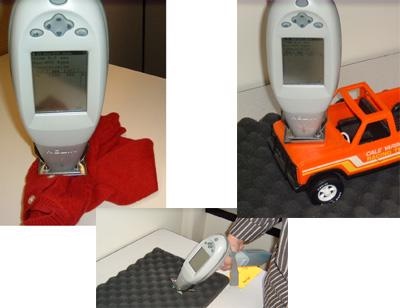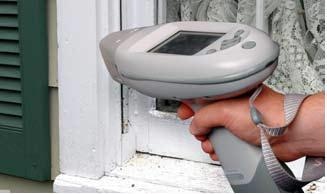Government regulations, increased public awareness, and legal action have all driven requirements for the identification of lead hazards in the environment. In fact, the U.S. EPA’s Renovation, Repair, and Painting (RRP) Rule, which took effect in April 2010, is intended specifically to address the issue of lead dust. Under this rule, contractors, painters and specialty trades, rental property owners, and certain others who perform any RRP projects that disturb lead paint in pre-1978 homes or child-occupied facilities, e.g., schools or daycare, must be EPA-certified as well as follow certain lead-safe work practices1.
With documented effects, such as diminished learning abilities in children, kidney and central nervous system damage, as well as reduced fertility and miscarriages, researchers concluded almost a decade ago that there is no safe level of lead exposure2.
Identification of Lead
Public health officials, environmental professionals, and community activists face an overwhelming challenge: pinpoint lead’s location in the environment, identify the sources of contamination, and confirm that clearance criteria have been achieved after abatement. The traditional approach built on field-based sample collection, combined with laboratory analysis, largely has been replaced by the use of handheld equipment – effectively bringing the lab into the field. Thermo Scientific Niton x-ray fluorescence (XRF) analyzers quickly identify and quantify lead in virtually all sample types: paint, consumer goods, soil, sediment, dust, air, and more.

Supported by a Performance Characteristic Sheet (PCS) documenting no inconclusive readings, no need for substrate correction, and no false positives/false negative readings, the Niton® XLp 300 Series can determine in seconds whether lead is positive (defined by the US EPA3 as greater than or equal to 1.0 mg/cm2) or negative. If you are in a jurisdiction with more stringent standards, you can easily change the action level to ensure compliance with local regulations. Actual lead values are also displayed, permitting you to more accurately quantify the hazards associated with particular samples. And our patented depth index goes one step further, telling you whether lead is present on the surface, or whether it is deeply buried within the paint matrix.
Analysis of Lead Dust
The analysis of lead dust poses another challenge. Widely acknowledged as the primary source of childhood lead poisoning3, lead dust is hazardous even in very small amounts as is recognized by the RRP Rule. Standard practice involves collecting the dust on an ASTM-compliant towelette wiped over a defined area. This step is followed by analysis of the “wipe” for determination of the lead load, which yields a lead-dust concentration in µg/ft2. The Niton XLp 300 Series XRF analyzer offers the ability to perform this analysis on site using the optional Dust Wipe Analysis mode.

Unparalled performance for residential lead inspection.
Analysis of Lead in the Outdoor Environment
In the outdoor environment, lead presents additional challenges. Whether the result of damaged exterior paint, residual contamination from leaded gasoline, a former pesticide application, or by-products from an industrial process, the sheer volume of samples required to accurately determine the extent of contamination and surgically delineate its boundaries demand the speed and accuracy of a Thermo Scientific Niton analyzer. The EPA recognizes this technology’s advantage and has based its Method 6200 soil testing procedures on handheld XRF. “The result is a clearer delineation of how soil contamination differs from one part of the property to another."4 When combined with optional Bluetooth™ communications and a portable GPS device, latitude, longitude, and elevation are stored along with the analysis data from each test, permitting real-time contamination mapping.

Industrial lead paint measurement for site assessment and worker protection.
Measuring Lead in Consumer Products
Further, the Niton XLp 300 Series has the added capability of measuring lead in consumer products with its “Consumer Goods” mode. This mode allows you to screen for lead in accordance with the Consumer Product Safety Improvement Act (CPSIA) of 2008 by adding the extended capability to measure lead in plastics, fabric, and other products. Lead in plastics and similar substrates is reported in parts per million (ppm), while lead in paint is measured in micrograms per square centimeter (µg/cm2). The instrument is the only analyzer with a PCS that does not contain an inconclusive range while still featuring the detection limits necessary to comply with the CPSIA.
All of our analyzers include fully customizable data fields for rapid entry of sample location/condition and site conditions, simplifying reporting and maximizing inspector productivity.
Advantages of Thermo Scientific Niton XLp 300 Series Analyzers
Thermo Scientific Niton XLp 300 Series analyzers provide many distinct advantages:
- No substrate correction or inconclusive range
- Soil mode to evaluate outdoor risks
- Dust mode to pre-screen abatement or renovation work
- Consumer Goods mode for complete EBL evaluation
- Quick, easy-to-use tool for RRP Rule compliance
Thermo Scientific Niton XLp 300 Series Specifications
The specifications of Thermo Scientific Niton XLp 300 Series are provided in the table below.
| Parameters |
Specifications |
| Weight |
3.0 lbs (1.4 kg) |
| Dimensions |
9.75x10.5x3.75 inches (248x273x95 mm) |
| Batteries |
(2) Rechargeable Quick Swap lithium-ion battery packs 6-14 hour use each |
| Excitation Source |
40 mCi 109Cd (1,480 Mbq) sealed radioisotope |
| X-ray Detector |
High-performance, electronically cooled, solid-state detector optimized for Pb L-shell and K-shell x-ray detection |
| System Electronics |
Hitachi SH-4 CPU
ASICS high-speed DSP
4096 channel MCA |
| Display |
Backlit VGA touch-screen LCD |
| Testing Modes |
Lead-based Paint Mode (standard)
K&L Paint Mode (Standard)
Bulk Sample Mode (optional)
Thin Sample Mode, including Dust Wipe Mode, 37mm Filter Mode (optional)
Thin Sample Mode (user defined) (optional)
Consumer Good Mode (optional) |
| Data Storage |
Internal ~6000 readings + spectra |
| Data Entry |
Three methods for user data entry:
• Virtual touch-screen keyboard
• User-programmable pull-down lists
• Integrated barcode reader |
| Data Transfer |
RS-232 serial cable or optional Blutooth™ wireless connection
Niton Data Transfer (NDT©) PC solfware utility easily exports data for use in common PC applications and provides data encryption QA/QC documentation |
| Standard Accessories |
Shielded belt holster
Locking shielded waterproof carrying case
110/220 VAC charger/adapter
Spare lithium-ion battery pack with holster
RS-232 PC data transfer cable
NIST-traceable Lead Paint Standards |
| Optional Accessories |
Portable test stand
Check/verification standards per additional mode
Bluetooth wireless communication
Wireless printers and portable GPS |
| Security |
Password-protected user security |
| Licensing/ Registration |
Varies by region, Contact your local distributor |
Footnotes
- United States Environmental Protection Agency, Lead in Paint, Dust, Soil, “Renovation, Repair and Painting,” https://www.epa.gov/.
- Lanphear BP, Dietrich K, Auinger P, Cox C. “Cognitive deficits associated with blood lead concentrations <10 microg/dL in US children and adolescents.” Public Health Report 2000 Nov-Dec; 115(6)521–529.
- Lanphear BP, Matte TD, Rogers J, Clickner RP, Dietz B, Bornschein RL, Succop P, Mahaffey KR, Dixon S, Galke W, Rabinowitz M, Farfel M, Rohde C, Schwartz J, Ashley P, Jacobs DE. “The Contribution of Lead-Contaminated House Dust and Residential Soil to Children’s Blood Lead Levels. A pooled analysis of 12 epidemiologic studies.” Environ Research. 1998 Oct 79(1):51–68.
- Lead-Safe Yards, Developing and Implementing a Monitoring, Assessment, and Outreach Program for Your Community, United States Environmental Protection Agency, January 2001, page 68.

This information has been sourced, reviewed and adapted from materials provided by Thermo Fisher Scientific.
For more information on this source, please visit Thermo Scientific Portable Analyzers for Material ID.